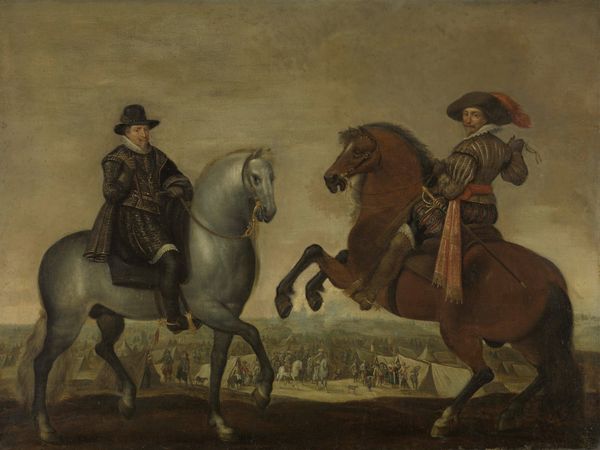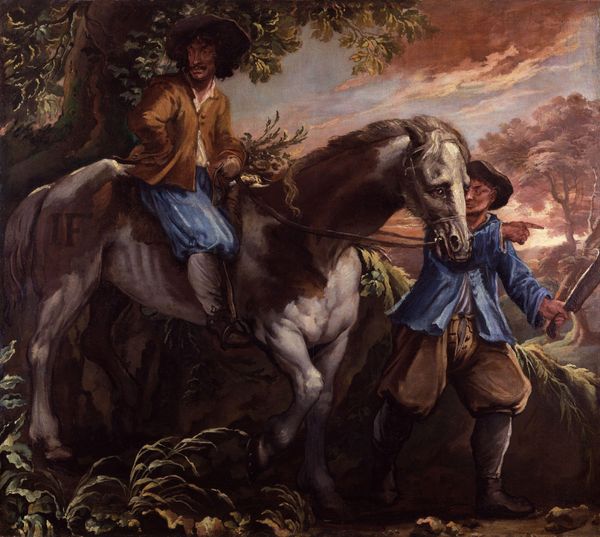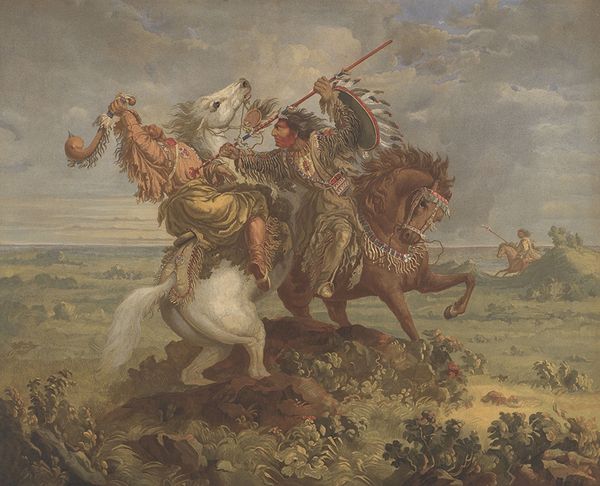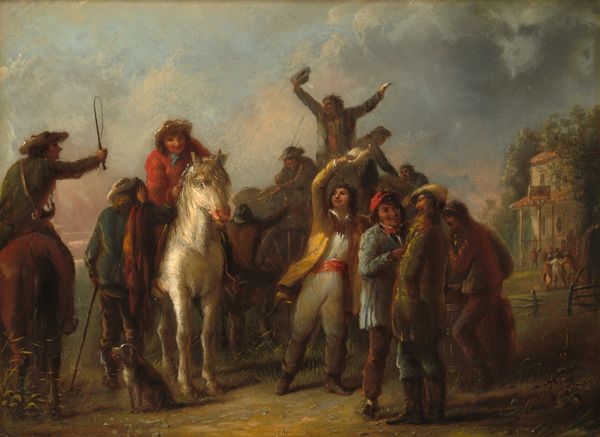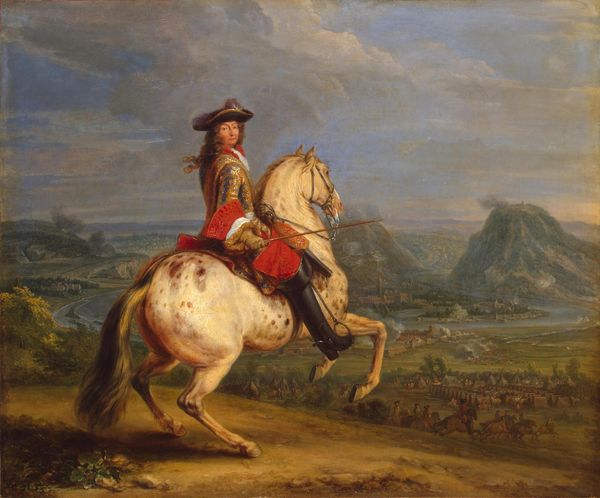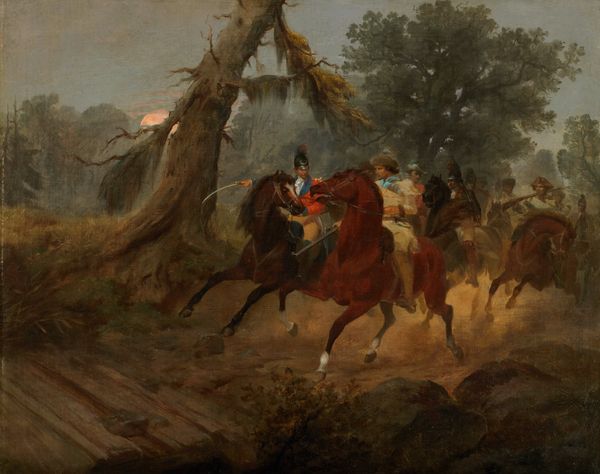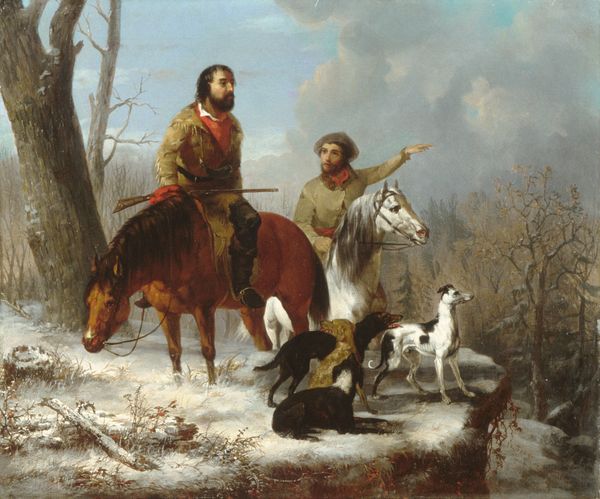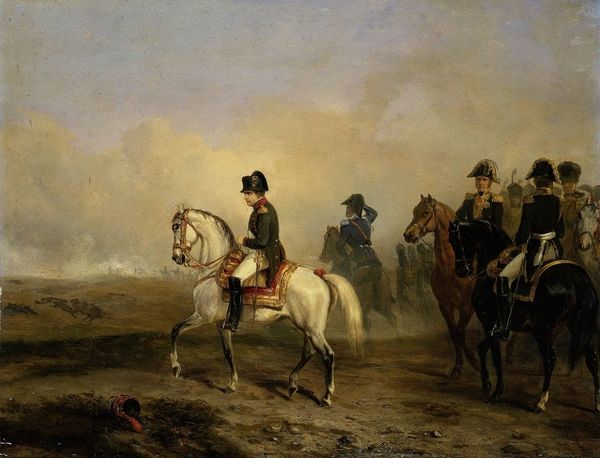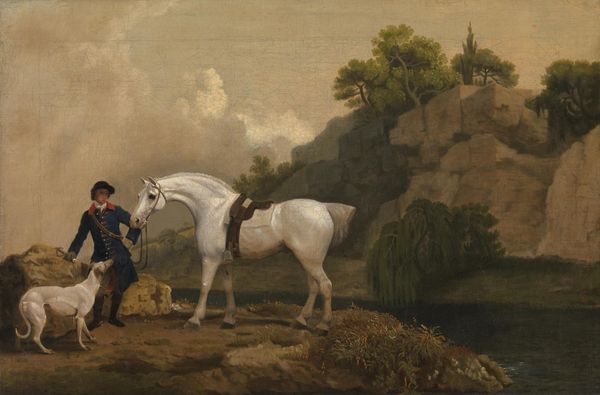
Frederick Henry and Ernst Casimir of Nassau-Dietz at the Siege of ’s Hertogenbosch c. 1629 - 1635
0:00
0:00
painting, oil-paint
#
portrait
#
baroque
#
dutch-golden-age
#
painting
#
oil-paint
#
landscape
#
oil painting
#
group-portraits
#
history-painting
#
academic-art
Dimensions: support height 47.1 cm, support width 63.1 cm
Copyright: Rijks Museum: Open Domain
Editor: Here we have Pauwels van Hillegaert's "Frederick Henry and Ernst Casimir of Nassau-Dietz at the Siege of 's Hertogenbosch," painted with oils sometime between 1629 and 1635. It’s grand and martial, but also quite controlled. How would you interpret it? Curator: Look at the material extravagance of the clothing and the horses. Oil paint as a medium allows for the capture of texture and light on the armour. Consider also the sheer scale of the piece; what statement is being made by depicting military leaders with such luxurious materials at such an imposing size? Editor: So, beyond just commemorating a victory, it’s highlighting the wealth and resources at their disposal? It almost feels like propaganda. Curator: Precisely. The Dutch Golden Age was fueled by trade, which directly supported these military endeavors. We are invited to look closely at how economic structures can feed artistic production and how painting serves as a luxury item in itself, not only illustrating power but also becoming an instrument of it. Think about the labour involved in producing the canvas, grinding the pigments for oil paints, the cost of the pigments themselves. How do you think all of this plays into our understanding? Editor: It forces you to consider the costs – both financial and in human effort – that underlie this supposedly triumphant image. I never thought about it this way! Curator: Exactly. Art isn’t created in a vacuum; it's a product of, and a contributor to, social and economic systems. Considering materiality allows for new appreciation. Editor: I'll definitely be thinking about the means of production in artworks a lot more from now on!
Comments
rijksmuseum about 2 years ago
⋮
Prince Frederick Henry and his cousin Count Ernst Casimir pose triumphantly on their horses before ’s-Hertogenbosch. Frederick Henry points his commander’s staff at the Habsburg-occupied city now being stormed by Dutch forces. It was not for nothing that he was nicknamed ‘the conqueror of cities’. He captured a series of cites from the Spanish. The retaking of ‘s-Hertogenbosch in 1629 was one of the most important.
Join the conversation
Join millions of artists and users on Artera today and experience the ultimate creative platform.
